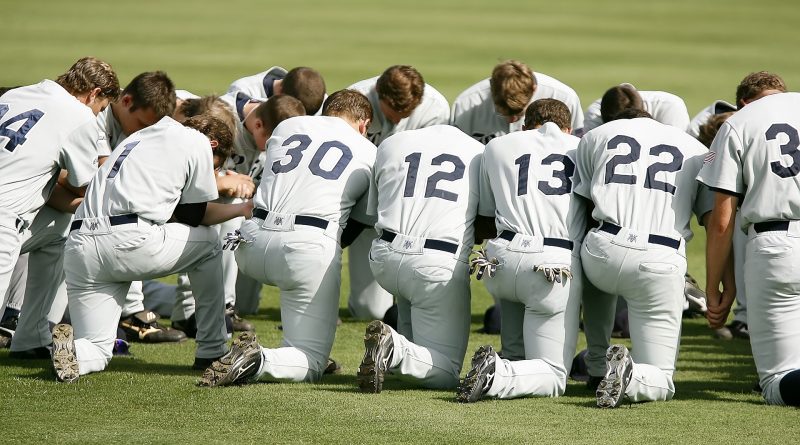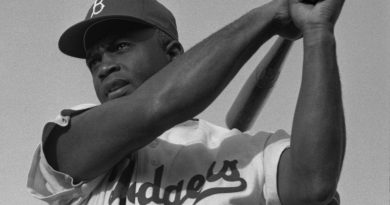Major League Baseball’s Futures: Betting to Win Big
Futures betting, which is essentially betting on the teams that will win their division, conference, league, or the entire thing, is incredibly alluring because the odds are typically very excellent. It’s challenging to foresee the future in any sport, but baseball’s seven-month, 162-game schedule presents an especially formidable task.
The beautiful thing about futures betting is that you may make bets on a variety of teams, including safe bets, rising stars, and long shots, and ultimately cover the spread or come out on top by assuming no risk.
This article will concentrate on two fundamental subjects: tactics for choosing which teams to bet on and fundamental betting strategies that can, in some cases, preserve your wager.
In futures betting, you should place bets on multiple teams, including favorites, teams that have improved, and clubs that could have an “impossible dream” season. Similar to March Madness betting, you have a lot higher chance if you divide your funds across several teams as opposed to spending all of your money on just one group.
Do your homework before you place even one wager. There are a ton of analytical articles about each team and how they should perform in the forthcoming season in magazines, newspapers, and online. It wouldn’t hurt to look back over several seasons to see how different forecasters have performed in the past. observing patterns, such as how many experts predicted the Yankees would win the World Series and finish top in their division. It can be really beneficial if you have a particular expert who you believe has been fairly accurate and whose methodology is sound.
The more in-depth the analysis is, generally speaking, the better, so read attentively, be selective, and be sure to take into account your own game-specific knowledge.
Be wary of an analysis’s veracity if it omits the following: business and management procedures, such as the team’s budget for player pay; managerial expertise in baseball; and the strength of the Minor League system. Key trades, acquisitions, and losses; pitching strength and depth; offensive potential; and defensive skills are a few of the more obvious topics that should be discussed. Another significant factor to take into account is the club’s age and experience, as well as team chemistry and other intangibles.
Feel free to conduct more in-depth research on your own; doing so can be advantageous.
Baseball may get greater good publicity than any other sport because of its lengthy preseason. Every team looks to have at least one veteran player poised for a breakthrough season, a standout youngster who will contribute, and a pitcher who can truly elevate the squad.
By its place on the calendar, spring training exudes optimism and serves as a metaphor for the coming of a lazy, pleasant season after a long, wet, chilly winter. Particularly if you have a favorite team, don’t fall for it. The riskiest kind of gambling is based on spring training hype.
Additionally, keep in mind that some previews are written to pique fans’ interest in the longest season in professional team sports and won’t be unduly critical of many clubs as a result. Less than half of the 30 teams in Major League Baseball have any chance of making the playoffs, and of those who do, just three or four have a realistic possibility of taking home the championship.
You’ve done your research, and now you’re deciding which teams to choose. Let’s look at the future for this year to see what some of your options are. The following odds were released during the first week of February 2006, and we are going to consider these for exercising purposes. Recognize that odds presented by various gaming sites frequently vary. As an illustration, the Toronto Blue Jays were listed at 17 to 1 in this list, although another oddsmaker had them listed at 25 to 1 at the same time.
MLB
2006 World Series
Team Odds
TIER 1:
New York Yankees 7/2
New York Mets 4/1
St. Louis Cardinals 5/1
Boston Red Sox 7/1
Chicago Cubs 8/1
Chicago White Sox 9/1
TIER 2:
Los Angeles Angels 10/1
Cleveland Indians 12/1
Oakland Athletics 15/1
Houston Astros 15/1
Toronto Blue Jays 17/1
TIER 3:
Atlanta Braves 20/1
Philadelphia Phillies 20/1
San Francisco Giants 20/1
Los Angeles Dodgers 20/1
Minnesota Twins 30/1
San Diego Padres 30/1
TIER 4:
Texas Rangers 50/1
Ariz. Diamondbacks50/1
Detroit Tigers 60/1
Wash. Nationals 60/1
Seattle Mariners 70/1
Milwaukee Brewers 80/1
Baltimore Orioles80/1
Tampa Bay Rays 100/1
Cincinnati Reds 100/1
Pittsburgh Pirates 125/1
Colorado Rockies 150/1
Florida Marlins 200/1
Kansas City Royals 300/1
The teams have been separated into four tiers for this exercise. The six teams in Tier 1 are those that this oddsmaker believes have the best chance of winning the World Series. Teams in Tier 2 are thought to be competitive but less likely to take home the championship. The teams in the third tier are far from favorites, but many of us would consider them to have some chance of making the postseason. The last category, which comprises the majority of MLB teams and makes up over half of them, is made of genuine long shots.
According to one technique, splitting up the money you intend to bet will boost your chances of winning. You must decide how much risk you are willing to take if you decide to do this, which is a sensible course of action when betting on futures. The payoff increases with risk, but the likelihood of a payoff decreases as risk increases.
Consider a scenario in which you decide to stake a total of $100 on the 300 to 1 Royals. You get $30k if Kansas City wins the series. However, the likelihood of that is quite small. You could wish to split that $100 into 10 $10 wagers instead. If you do that, you should be aware that if any of the top six teams wins, you will have lost money (perhaps between $10 and $65).
However, betting on any combination of Tier 2 to Tier 4 clubs ensures that even if you choose a winner (the Los Angeles Angels are 10-1), you will at the very least break even. Think about the Jays, Astros, Indians, and A’s being in Tier 2. These teams have all recently been contenders.
When you examine the six Tier 3 teams, you’ll see that they all have a chance to win, and many of them have been competitive and on the verge of the playoffs over the previous five years. All you have to do is wager on these six teams and the bottom four teams in Tier 2 to get some action that might result in a profit.
Your odds of striking the winner will be reduced if you choose to place one or two of your bets in Tier 4, but if you do, your return will be far higher than that from any of the other tiers.
It is entirely up to you how you wager. But keep in mind a few key points before betting on baseball futures. Consider carefully evaluating the pitching staff of each club before selecting your team(s). Why? Baseball pitching wins titles.
Even excellent hitting will be defeated by good, consistent pitching at least 70% of the time. Don’t focus only on the starters. Closers and middle relief are crucial for winning the game. The age of the pitching staff should also be taken into consideration; too young or too old could result in a late-season meltdown. Finally, consider the depth of the farm system in terms of rookies who are ready to make the transition and, more crucially, talent that the team might be able to deploy in a trade mid-season to improve either its defense or offense. There aren’t many good pitchers around, and even fewer are willing to throw for another team. When everything else fails, always choose sound pitching.
The New York Yankees are the club that most people predict will win the World Series, which is fascinating to notice. Since their team salary surpassed the $100,000,000 mark, the Yanks have not won the World Series. Naturally, it has surpassed $200,000,000 now. The Yankees have been the favorites every year since 2000, even though it has been five years since they brought a title to New York.
Do you recall the 1991 World Series matchup between the Braves and Twins? Both had been more than 100 to 1 underdogs before the start of the season. With Minnesota pitcher Jack Morris being named the series MVP, the Twins prevailed in seven games. That was a substantial reward!
In our example, the Tier 3 Chicago White Sox were around 30-1 last year, while the New York Yankees were the overall favorites at 5-4. A sawbuck bet paid out $300 to the White Sox.
Of course, if you believe in fate, numerology, and curses, take into account the fact that the White Sox won the world championship in 2005 for the first time since 1917 and the Red Sox won it in 2004 for the first time since 1918. The Chicago Cubs, who last won a World Championship in 1908, are the team to follow if this trend continues. Unfortunately, they’re about 9 to 1, which means that the payout is modest given that it is a futures bet.
Predicting the future World Champions is rarely a sure thing, but it’s frequently a lucrative endeavor for the individuals who get it right. Whether you split your money around or put everything on one team, it’s rarely a sure thing.




